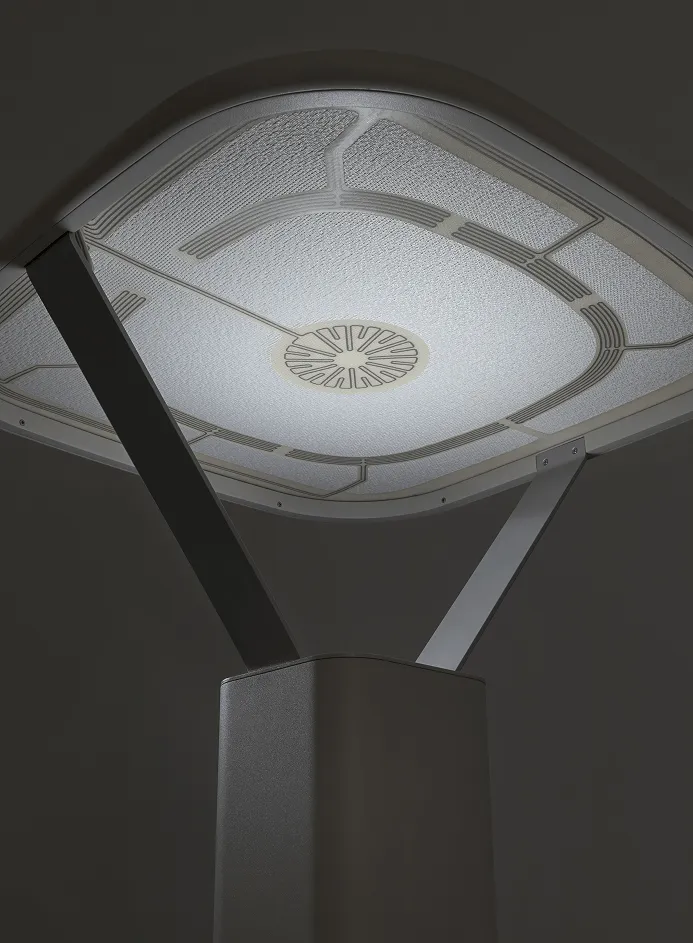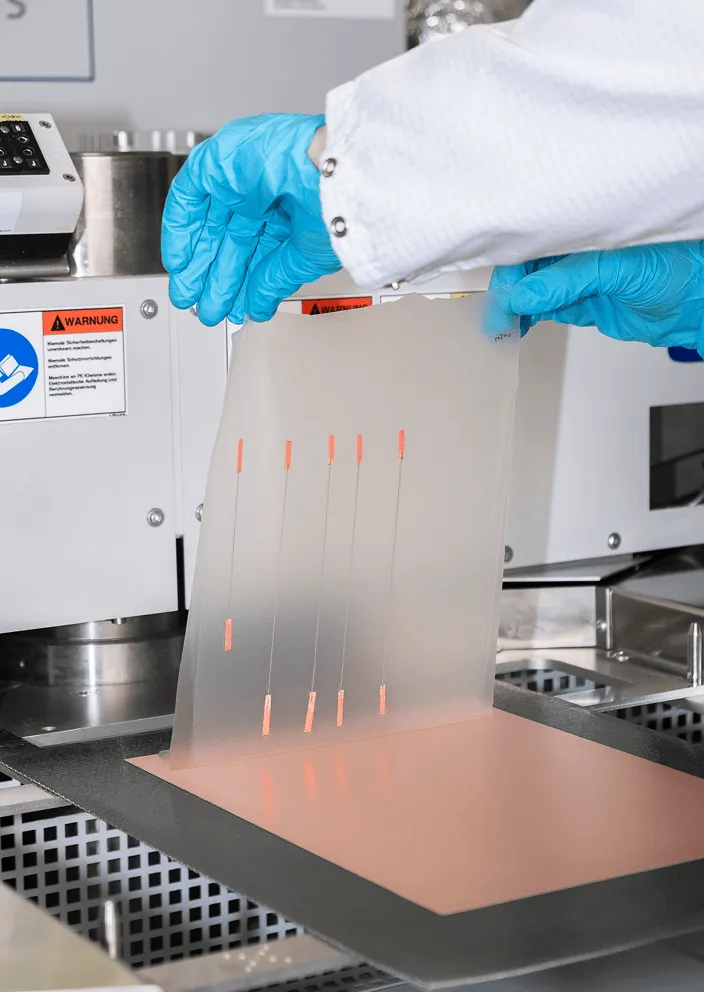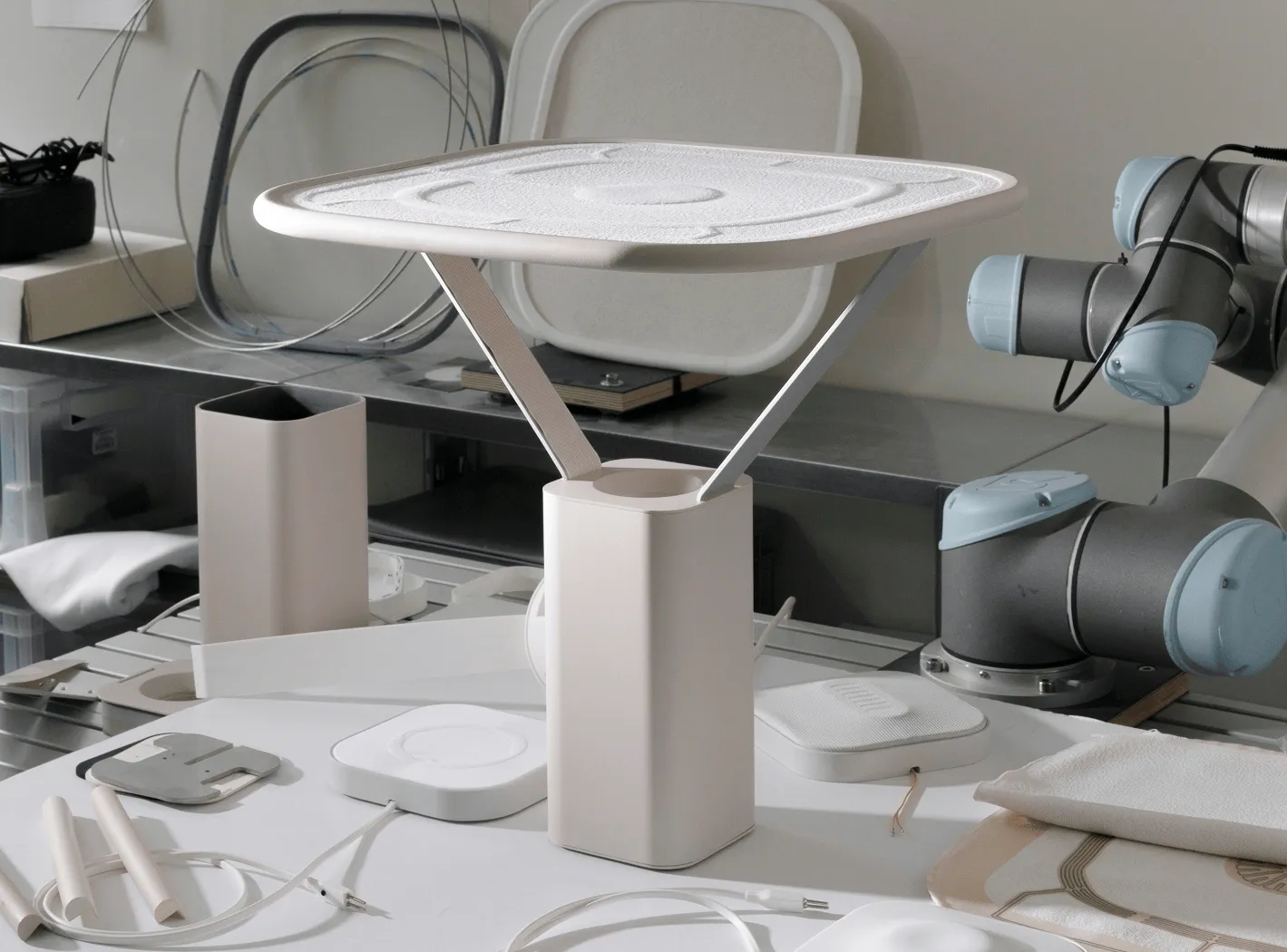


From lab to product. Soft Interfaces is an interdisciplinary research project that develops intuitive interfaces for sensitive textiles. We focusesed on combining textiles with conductive liquid metals to create stretchable, touch-sensitive surfaces that are functional, aesthetic, and adaptive.
See the Press Kit
The year-long research partnership resulted in an interactive lamp with a textile screen that reacts to the gentlest of touch. By stretching the fabric, the cross-section of the liquid metal pathways changes. A subtle shift that the system reads to adjust light temperature or intensity.
This intuitive, touch-based control hints at a new generation of human-object relationships.
Liquid Metal Dispensing is still very much a lab-stage technology. Bringing this technology into the realm of product development had never been attempted. Therefore, research into material modification to obtain a printable ink, creating precise conductive paths, encapsulating the liquid metal, building functional circuits, and integrating them into custom-knit textiles was necessary.
Liquid metal is characterized by a melting temperature below room temperature, non-toxicity and generally good environmental compatibility.

The scientific team advanced their manufacturing processes to deliver a one-of-a-kind, highly sensitive textile screen.
Through regular visits to the Fraunhofer IZM lab, the WINT team gained a hands-on understanding of the technology’s potential and constraints. In return, studio workshops with the scientists opened space for discussing interaction principles, leading both teams to agree on a clear, minimal, and tactile approach to user interaction.


The textile screen is held within a custom-developed frame that keeps it under perfect tension.
The textile was developed in collaboration with casestudies, a Berlin-based knit design studio that produced the custom screens. An alternating knit pattern subtly marks the interactive zones, while varying surface textures enhance the tactile experience.
Smart, integrated conductor tracks created with LMD technology enable soft, tactile interactions that reduce the need for additional screens and extra electronics. Mechanically, these liquid metal tracks outperform conductive yarns and other stretch sensors, while washability and production efficiency show promising potential for scaling.
Looking ahead, fully integrating this technology into automotive interiors, home textiles, HiFi systems, or medical devices could help create products that last longer and consume less energy. At the same time, screenless, haptic interactions encourage more intuitive, body-centered engagement, reconnecting users with the sensual qualities of the objects and environments around them.



Technical development and scientific lead
Fraunhofer IZM
Textile development
Case Studies
Video and product photography
Michelle Mantel
Documentary photography
Leon Laskowski
Concept Design and Production
WINT Design Lab
Funding
Fraunhofer-Netzwerk „Wissenschaft, Kunst und Design“
Assistant
Julia Huhnholz
Press
↗︎ Designboom
↗︎ The beauty of innovation
↗︎ Design Wanted
↗︎ FRAME